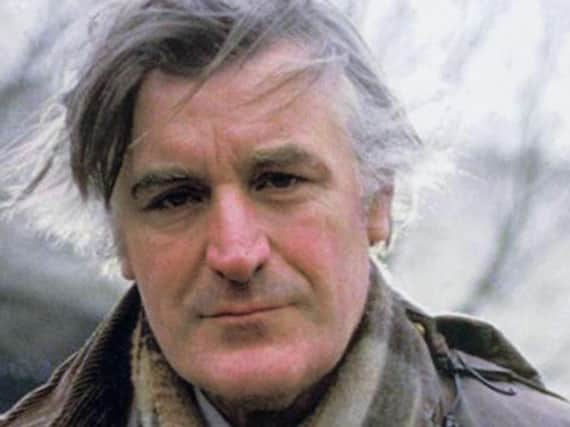Walkers now able to follow in the footsteps of famous Mytholmroyd poet Ted Hughes


The Discovering Ted Hughes’ Yorkshire trails have been put together by experts at the University of Huddersfield.
The maps, designed by Hebden Bridge cartographer Christopher Goddard, cover walks in Mytholmroyd and the Upper Calder Valley, where Hughes was born, Mexborough where he wrote his first poems and Patrington in East Yorkshire where he did his National Service in the RAF.
Advertisement
Hide AdAdvertisement
Hide AdThe trails take walkers through sites associated closely with the poet, including Heptonstall cemetery where his wife, Sylvia Plath, was buried, and Lumb Bank, where he lived for many years.
Dr Steve Ely, the director of the Ted Hughes Network, said: “The maps, based on the latest research into Hughes’s life and writings, give walkers a unique opportunity to experience the landscapes that inspired and formed England’s greatest 20th century poet.
"So many locations in the Upper Calder Valley are closely associated with Hughes, his life and work. Seven poems, including the anti-war poem ‘Out’ and ‘Source’ the touching personal poem about his mother, are set in his birthplace at 1 Aspinall Street, with a further twenty-seven poems having locations in the Mytholmroyd area.
"Several other poems and stories (including ‘Horses’ and ‘The Deadfall’ are set in Crimsworth Dean.
Advertisement
Hide AdAdvertisement
Hide Ad"Hughes also wrote several poems focused on Heptonstall & Colden Clough, including ‘Lumb Chimneys’ and ‘Wind’. The area takes on particular resonance when you take into account that Hughes once lived at Lumb Bank just below Heptonstall, and for a long time considered settling there permanently, and that he buried his first wife, the poet Sylvia Plath, in Heptonstall cemetery.
"The landscape of the Upper Calder Valley was hugely important to Hughes’s life, work, and imagination, and he wrote over a hundred poems about the area, most of which are collected in his 1994 collection, Elmet."
Interpretative panels that mark the start of each walk are installed canalside near the entrance to the Moderna business Park in Mytholmroyd, at Hardcastle Crags car park and at Hebden Bridge railway station but the range of the maps extends beyond the Upper Calder Valley.
Dr Ely added: "Discovering Ted Hughes’s Yorkshire also includes three maps that open up Hughes’s other Yorkshire locations; two are are focused in and around Mexborough in the southern West Riding, where he lived between the ages of 8-21—the place where he wrote his first poems and resolved to become a poet—and another focuses on Patrington in the East Riding, where Hughes did his National Service in the RAF. These three Yorkshire locations formed Hughes as a poet.’
Advertisement
Hide AdAdvertisement
Hide Ad"We had originally planned to launch the maps in the spring and summer of 2020 with guided walks, school and community creative writing workshops and poetry readings, but Covid-19 put those activities on hold.
"As soon as restrictions are lifted—hopefully by the late spring/summer this year—we will implement and publicise a programme of Discovering Ted Hughes’s Yorkshire activities.
"However, people will at least now have the opportunity to use the maps to self-guide themselves along the trails.’
Although the Ted Hughes Network at the University of Hudderfield co-ordinated the development of Discovering Ted Hughes’s Yorkshire, a number of Calderdale organisations, including Hebden Royd Town Council, Calderdale Council and the Elmet Trust also made important contributions.
Advertisement
Hide AdAdvertisement
Hide AdDr Ely said: "I’d like to thank Hebden Royd Town council in particular for their support and generous funding of the project, the Elmet Trust’s Ruth Crossley and Nick Wilding for the depths of Hughes-related local knowledge they were able to share, and Chris Goddard for his expertise—and patience! Carol Hughes’s generous support and encouragement was also much appreciated."
Comment Guidelines
National World encourages reader discussion on our stories. User feedback, insights and back-and-forth exchanges add a rich layer of context to reporting. Please review our Community Guidelines before commenting.